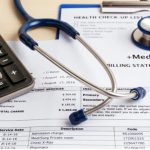Revolutionizing Healthcare: How Real-Time Location Systems (RTLS) are Saving Live
RTLS, or real-time location systems, track the whereabouts of people and objects in real-time and over time. Loss prevention, staff and patient safety, and other benefits could all be realized by implementing an RTLS in a hospital setting.
Here are six ways technology has helped patients and doctors progress.
Emergency Help Programs (or “Duress Apps”)
Some RTLS systems have a built-in emergency notification system that employees can use to get help quickly. A nurse, for instance, may be present in the room of a psychiatric patient who exhibits aggressive behavior out of the blue. Alternatively, a doctor might examine their vitals when a patient suddenly stops breathing. Timely response mitigates the potential for harm in such situations.
By installing RTLS for hospitals with panic buttons, employers can make employees feel more secure in a crisis. In addition, patients may feel more at ease knowing that this option is available to them.
Adding more hospital beds to relieve bed congestion
During the COVID-19 pandemic and other periods of high demand on healthcare facilities, staff must make the most efficient use of available beds. One component of this is keeping track of patient discharge times so that beds may be ready for new patients as soon as they arrive.
Having fewer breakdowns in medical gear
Inadequate or delayed access to necessary equipment can devastate patient care. Because of the severity of the problem, nurses at Texas Health Presbyterian Dallas Hospital started hoarding medical supplies and equipment. The hospital frequently turned to equipment rentals to make up for broken medical devices.
The hospital reduced equipment repairs by eighty percent after reevaluating how it employed an existing healthcare RTLS. No new medical devices were purchased or rented in the first year after implementing this system.
Reducing Possibilities of Infection
Eleven deaths were traced back to dirty duodenoscopes at a single hospital. Patient and staff safety is improved with RTLS technology, which may help avoid such tragedies.
If a patient is known to have an infection, the system can alert workers to that fact so they can take the proper precautions before entering the room. In addition, an RTLS system can notify staff as necessary steps are taken to clean a piece of medical equipment. Then, you can utilize those things again with complete confidence.
Another use for RTLS is to track people who use it to ensure they’re washing their hands afterward. This program tracks when employees are in contact with patients and checks to see if they’ve washed their hands before and after working with patients.
The ability to track lost contact is another useful feature of an RTLS system. It is crucial to know the whereabouts of everyone who may have come into touch with a disease in the event of an outbreak.
Checking the temperatures of the vaccines.
When vaccine temperatures deviate from programmed thresholds, RTLS systems send alerts (audible, visual, sms, and email) to designated staff members using a battery-powered wireless sensor and market-leading software solutions. The sensor will continue to record temperature readings even if there is a loss of power or connectivity.
Keeping an eye on traffic patterns and providing metrics on processes
When put to good use, RTLS can provide statistics on how many individuals currently stay in a certain hospital area and the paths they took to get there. As the Parkland Health and Hospital System relocated to a new site, it relied on a real-time location system (RTLS) to plan the most efficient patient transfers.
People might be located within six feet using the technology. In addition to real-time location tracking, the hospital utilized statistical analysis to predict the stamina of the staff members responsible for patient transport. The hospital used this data to recommend the most efficient route for the patient transport team between facilities.
In addition, an RTLS network can gather information on status events and patient-staff-equipment interactions by keeping tabs on manual operations, thereby giving the real-time visibility and analytics essential to enhancing workflows.
RTLS system components can be monitored remotely.
It is crucial to the operation of RTLS technology to keep tabs on its many parts, such as batteries and tags. The RTLS batteries have a finite lifespan, just like any other battery. Yet an RTLS is only useful with its battery. Yet many businesses need the workforce to keep tabs on hundreds of batteries. At this point, it’s not just prudent but also essential to hire a third-party monitoring service.
In conclusion, RTLS has proven to be a useful tool in healthcare settings, with applications including emergency aid programs, bed congestion reduction, infection prevention, equipment and person tracking, vaccination temperature monitoring, and workflow optimization. The technology and its different parts allow hospitals to boost patient care, employee security, and productivity. Eventually, RTLS will ensure patients receive the best possible treatment as healthcare develops.








